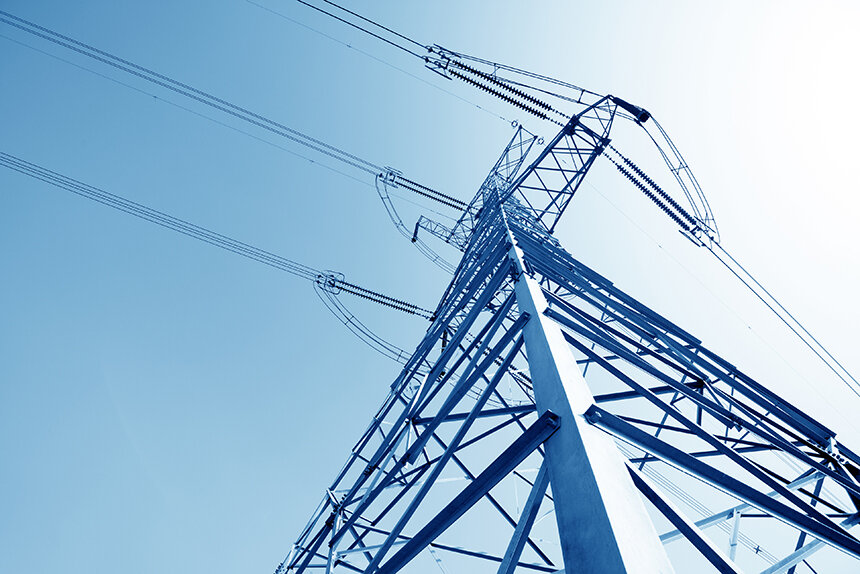Plan Needed to Handle Influx of Renewable Energy
March 8, 2021
There’s little doubt that electric vehicles will soon be running the roads. Automakers such as Ford, General Motors, and Volvo have committed to larger electric fleets. States are adopting sales targets for zero-emission vehicles and introducing bills that follow California’s ban on new gas-powered cars in 2035.
And while heat pumps are less visually appealing than electric vehicles (EVs), the heating and cooling devices are also gaining traction in the movement to decarbonize buildings.
With a new president and enthusiasm for both technologies, new incentives are expected from states and the federal government. Congress is considering a more-generous tax credit for EVs. In Rhode Island, National Grid and the Office of Energy Resources are offering rebates and loans for heat pumps. Massachusetts provides rebates for EV purchases and leases. A utility in Vermont even has rebates for electric bikes and motorcycles.
The shift to reduced carbon power will increase demand for electricity just as the grid will be changing from centralized power to distributed smaller sources of renewable energy for offshore wind and even hydropower from Canada.
Proponents say it makes economic sense to keep power generation local. It creates jobs and keeps more money flowing in a state. A fact brought up the Rhode Island AFL-CIO when it endorsed a key climate bill advancing in the General Assembly.
But is the grid ready? That’s the question New England governors asked ISO New England, the operator of the regional grid, in October when they demanded better planning to ensure “reliability and resiliency” in the power system to meet the changes in electricity use and handle the influx of renewable energy.
There’s no definitive answer yet. ISO New England is expected to publish two reports in early 2022 that look at EV and heat pump use by 2040. The Future Grid Reliability Study and the Pathways to the Future Grid Analysis are expected to explore possible gaps in the future power system and ways to adopt renewable-energy goals for each state.
For now, ISO New England projects there will be adequate capacity and reliability until 2030, as the electricity needed for EV growth is offset by energy-efficiency advancements and more solar power. But after 2030, when electrification must ramp up, is the gray area.
In the United Kingdom, National Grid is saying “preparations have been underway for a while” to meet the expected influx of power from new offshore wind facilities, along with the assimilation of more EVs. The British government is increasing funding for so-called “green transportation.” Prime Minister Boris Johnson has announced a ban on the sale of new gas and diesel cars by 2030.
For two years National Grid has been in talks with the U.K. government, service-station operators, and charging-station providers to address the transition to electrified transportation.
“There is definitely enough energy and the grid can cope easily,” said Graeme Cooper, National Grid’s transport decarbonization director for the United Kingdom.
National Grid isn’t offering the same conclusion for Rhode Island. There aren’t set solutions so far, but the state’s primary utility continues to modernize the electric grid to meet near-term electrification loads and manage the growth of renewable energy. The London-based multinational is augmenting existing plans to include increased use of EVs and heat pumps, which will be necessary to meet Rhode Island’s renewable-energy targets.
“The scenario planning and analysis will ensure the company is considering a wide range of potential impacts on the future electric system, and it will ensure we are ready to deploy the necessary solutions to maintain clean, safe, reliable, and affordable energy to all our customers well into the future,” a National Grid spokesperson wrote in an email to ecoRI News.
National Grid is installing 278 fast-charging ports across Rhode Island. The massive utility is also conducting a three-year study, called SmartCharge Rhode Island, of hundreds of current EV owners to understand charging habits and determine if incentives can prompt EV owners to help manage the grid by charging during off-peak hours.
Hank Webster, Rhode Island director and staff attorney for the Acadia Center, agrees with the strategy.
“The key to integrating EV charging into the grid in the near- and long-term is to incentivize off-peak charging to the fullest extent possible,” he said.
This strategy includes the use of battery storage and getting drivers to establish new habits such as charging at home when demand for power is low. So far, the pilot programs in Rhode Island and other state have shown that pricing incentives for charging during off-peak hours are working.
National Grid and the Rhode Island Department of Transportation are testing the concept of battery storage to supplant power from the grid during peak hours with a charging station plus battery-storage systems at park-and-ride lots in Warwick and Hopkinton.
“So by having battery storage that absorb excess energy at low-demand times and discharge it during high-demand times, we can better utilize all of that great clean, renewable energy and avoid calling upon unnecessary fossil power generation,” Webster said.
After 2030, when heat pumps and EVs are expected to gain greater market share, the grid will require minor upgrades, “but those are completely predictable, won’t occur in a vacuum, and can be integrated into the continual system investments that are made annually to keep it reliable,” he said.
Perhaps the more-pressing question is whether 2030 will be too late for widespread electrification to mitigate the worst effects of the climate crisis.
One big roadblock is the abandonment of methane power plants. The Acadia Center argues that new fossil-fuel power plants and infrastructure don’t need to be built as they get squeezed out by cheaper renewables.
But is it realistic to think there can be a plan and the political will to launch a movement at the level of a global war effort to rein in fossil fuels so that global warming is held in check?
Some experts argue that existing technologies — wind, solar, heat pumps, batteries, and EVs — can get us there. But they require an aggressive three- to five-year rollout of these options to reduce emissions by about 8 percent annually and reach zero emissions by 2050 or sooner.
“To meet the challenges of climate change the U.S. needs to move aggressively to transition away from an energy system rooted in fossil fuels to one almost wholly reliant on clean electricity,” according to the authors of a 2020 plan to cut emissions and boost the economy.
The concept, led by Saul Griffith and Sam Calisch, is gaining traction among groups pushing for some versions of a Green New Deal, such as the Sunrise Movement, because it invites participation across the economic spectrum and doesn’t rely on unproven and developing technologies like carbon capture and storage and hydrogen power.
At the core of Rewiring America is electrification of buildings and transportation, which entails redesigning power generation and the regional and national transmission system, coupled with rapid electrification. It calls for private capital in addition to government-sector inducements.
“From mass unemployment to the threat of climate change, the U.S. will face a number of seemingly unprecedented challenges even after the current public health tragedy has passed,” according to the authors. “Finding needed solutions won’t be easy and will require creative thinking, robust analysis, and political resolve.”




Why doesn’t national grid in Rhode Island offer off peak pricing or TOU? That would be a way to get EV drivers to charge at nighttime.